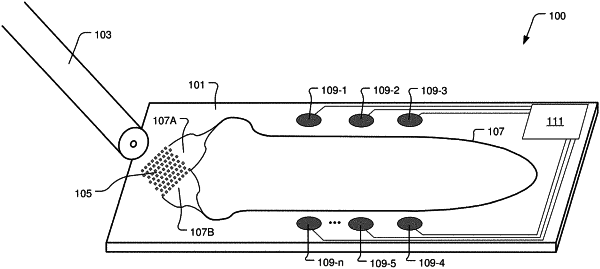| CPC G02B 6/29343 (2013.01) [G02B 6/272 (2013.01); G02B 6/2766 (2013.01); G02B 6/2773 (2013.01); G02B 6/2934 (2013.01); G02B 6/4213 (2013.01); G02B 6/4215 (2013.01); G02B 27/1006 (2013.01); H04B 10/60 (2013.01)] | 25 Claims |

|
1. An electro-optic receiver, comprising:
a polarization splitter and rotator having an optical input optically connected to receive incoming light, the polarization splitter and rotator having a first optical output and a second optical output, the polarization splitter and rotator configured to direct a first portion of the incoming light having a first polarization through the first optical output, the polarization splitter and rotator configured to rotate a polarization of a second portion of the incoming light from a second polarization to the first polarization so that the second portion of the incoming light is a polarization-rotated second portion of the incoming light, the polarization splitter and rotator configured to direct the polarization-rotated second portion of the incoming light through the second optical output;
an optical waveguide having a first end optically to the first optical output of the polarization splitter and rotator, the optical waveguide having a second end optically connected to the second optical output of the polarization splitter and rotator, such that the first portion of the incoming light travels from the first optical output of the polarization splitter and rotator through the optical waveguide in a first direction, and such that the polarization-rotated second portion of the incoming light travels from the second optical output of the polarization splitter and rotator through the optical waveguide in a second direction opposite the first direction; and
a plurality of ring resonator photodetectors positioned alongside the optical waveguide and within an evanescent optical coupling distance of the optical waveguide, each of the plurality of ring resonator photodetectors configured to operate at a respective resonant wavelength, such that the first portion of the incoming light having a wavelength substantially equal to the respective resonant wavelength of a given one of the plurality of ring resonator photodetectors optically couples into the given one of the plurality of ring resonator photodetectors in a first propagation direction, and such that the polarization-rotated second portion of the incoming light having a wavelength substantially equal to the respective resonant wavelength of the given one of the plurality of ring resonator photodetectors optically couples into the given one of the plurality of ring resonator photodetectors in a second propagation direction opposite the first propagation direction.
|